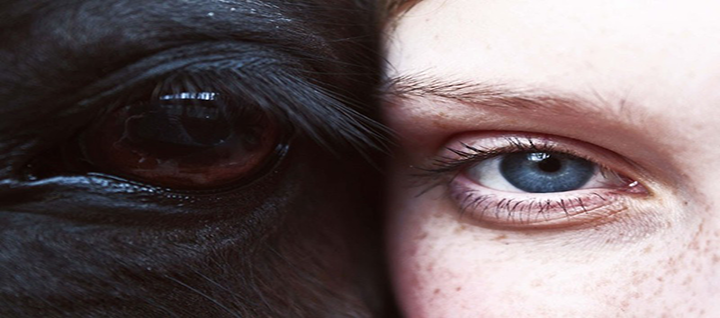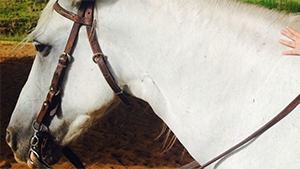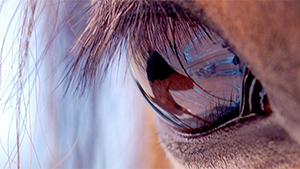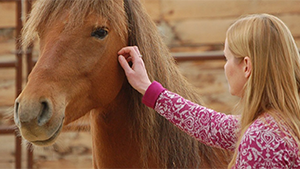
A horse’s perception of color is only possible in the presence of abundant light. There are several theories: one claims that horses see yellow, green, red, and blue well; another excludes blue; yet another excludes green and denies perception of violet tones. Still another asserts that horses can distinguish up to 27 shades of gray, ranging from nearly white to black.
Conclusion: Horses cannot distinguish colors in the same way humans do, and studies so far have not been definitive regarding their ability to perceive and differentiate colors. More precise scientific experiments are still underway.
However, horses have better night vision than humans due to a higher number of rods (types of photoreceptors) in their eyes. They take longer to adjust when moving from bright daylight to darkness and vice versa, being particularly sensitive to changes in shadow and light.
An Arab fable tells that the lion and the horse once argued about who had the better vision. They concluded that, on a dark night, the lion could see a white pearl in milk, while the horse could see a black pearl in coal.
The eyes reveal character:
- Small eyes, called “pig eyes,” suggest an animal that is not straightforward and may show rebelliousness.
- Eyes with a “wild” expression often indicate a horse that has been brutalized and is on guard for further mistreatment.
- Eyes with a “white-circled iris” denote a suspicious horse.
- Very large and bulging eyes often indicate nearsightedness.
- Eyes of “different colors” (heterochromia), where one iris is gray-blue while the other differs, have no impact on vision or the horse’s character.
Many horse experts place great value on the expression of the eyes, which can reveal different psychological states such as gentleness or stubbornness, liveliness or lethargy, fear or courage. Some conformation judges can even distinguish a horse by its gaze, often describing a mare’s look as having a “feminine expression.”
The visual organs should be among the horse’s most perfect features. Ideally, they should be wide-set, clear, open to the face, expressive, with crystalline transparency, and the iris should have medium sensitivity to light.
Article written by Deolir Dall’Onder for Revista Acontece Sul, Year XIV, Issue No. 143.









